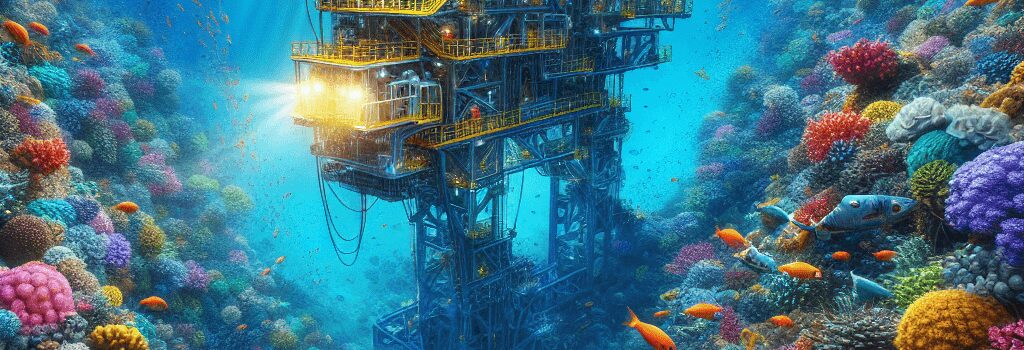Trump Order Promotes Deep-Sea Mining Amid Ecosystem Risks

In April 2025, former President Donald Trump issued a sweeping executive order titled “Unleashing America’s Offshore Critical Minerals and Resources”, directing the National Oceanic and Atmospheric Administration (NOAA) and the Department of Commerce to accelerate licensing for deep-sea mining in both U.S. waters and the high seas. While proponents hail it as a strategic move to secure supply chains for nickel, cobalt, copper and manganese—key components in electric vehicle batteries and defense systems—marine scientists, legal experts and indigenous leaders warn of irreversible biodiversity loss and a direct conflict with international law.
From Potato-Sized Nodules to Multi-Billion-Dollar Ventures
Polymetallic nodules are metal-rich, potato-sized concretions found on the abyssal plain at depths of 4,000–6,000 meters. They accrete layers of nickel, cobalt, copper and manganese at rates of roughly 2–5 mm per million years. In 2013, UK Seabed Resources funded a deep-sea survey led by marine biologist Diva Amon aboard a remotely operated vehicle (ROV). The ROV was rated to 6,500 m, equipped with:
- 4 kW LED illumination arrays for high-definition (4K) imaging
- Multi-beam sonars operating at 300 kHz for bathymetric mapping
- Manipulators capable of 100 Nm torque for sample collection
- Fiber-optic real-time telemetry to surface control stations
During a single dive, the vehicle encountered an anemone-like species with 2.5 m tentacles anchored to a nodule—probably a new species. Amon recalls her excitement mixed with dread at the prospect of mining operations obliterating such life.
Legal and Geopolitical Crosscurrents
Conflict with UNCLOS and the ISA
Under the 1982 United Nations Convention on the Law of the Sea (UNCLOS), the International Seabed Authority (ISA) holds exclusive jurisdiction over mineral activities beyond national boundaries. Though the U.S. has not ratified UNCLOS, the ISA’s 169 member states plus the European Union follow its Mining Code framework. ISA Secretary-General Leticia Reis de Carvalho stated:
“No State may unilaterally exploit seabed minerals beyond its continental shelf without the ISA’s authorization. Trump’s order misuses the 1980 Deep Seabed Hard Mineral Resources Act as a basis to circumvent international law.”
Legal scholar Duncan Currie argues that any U.S. permits in the Clarion-Clipperton Zone (CCZ) would breach customary international law, setting a precedent for other powers.
Strategic Mineral Security
In an era of tightening U.S.-China competition, administration officials assert that domestic deep-sea mining would:
- Reduce dependence on Democratic Republic of Congo cobalt exports (currently >70% global supply)
- Bolster defense supply chains for high-grade nickel alloys
- Stimulate maritime jobs in offshore engineering and subsea robotics
Yet, Representative Jared Huffman (D-CA) countered at an April House hearing: “Battery chemistries are rapidly evolving toward iron-phosphate and lithium-sulfur systems, which diminish the strategic value of deep-sea nodules.”
Environmental and Cultural Stakes
Above 650 feet, sunlight fuels photosynthesis; below that, the deep-sea hosts the planet’s largest ecosystem—over 95% of habitable volume. Amon notes only 0.001% has been imaged or sampled. Species include bioluminescent sharks, blind crustaceans farming symbiotic bacteria, and sessile invertebrates up to 2 m tall anchored on nodules.
“Mining would leave a permanent barren ‘track’ across the seabed,” said Amon. “Sediment plumes from disturbance could smother fauna tens of kilometers away.”
Indigenous leaders echo ecological concerns. Solomon Pili Kahoʻohalahala, a Hawaiian elder, stated deep-sea mining “violates our creation stories and risks desecrating ancestral waters.”
Technologies and Machinery in Deep-Sea Mining
Contemporary proposals involve crawler vehicles each weighing 1,200–1,500 tonnes, powered by 4–6 MW subsea cables, and guided via autonomous navigation systems. Key subsystems include:
- Sediment Removal Modules—High-pressure water jets to dislodge nodules
- Collection Hoppers—20 m3 capacity with continuous screw conveyor
- Pumping Risers—2 m diameter, 4,000+ meter length, with variable-speed centrifugal pumps
- Onboard Sensors—Acoustic Doppler Current Profilers to model plume dispersion in real time
These systems risk resuspending ultra-fine kaolinite-like particles, creating turbidity clouds. Computational fluid dynamics (CFD) simulations predict plumes could impact filter-feeding organisms up to 50 km away.
Environmental Monitoring and Restoration Strategies
To mitigate impacts, scientists propose multi-tiered monitoring:
- Pre-mining environmental baseline surveys using AUVs fitted with eDNA samplers and high-resolution side-scan sonar.
- Real-time plume tracking via distributed sensor networks, including optical backscatter sensors and fluorometers.
- Adaptive management protocols that trigger shutdowns when turbidity exceeds thresholds (e.g., 2 NTU above background).
For restoration, carbon fiber–supported “reef modules” seeded with deep-sea coral larvae have been piloted in the Clarion-Clipperton Zone, though success remains unproven after three years.
Geopolitical Implications and International Law Update
With the ISA expected to adopt its finalized Mining Code by Q4 2025, many nations are calling for a global moratorium. Over 900 scientists and 33 governments—including France, Fiji and Vanuatu—support delaying commercial extraction until robust regulations and impact studies are in place. The EU Parliament recently approved a resolution to ban deep-sea mining in its overseas territories pending further research.
Experts fear a “regulatory rush” where U.S. license approvals outpace ISA rule-making, forcing other countries to either follow suit or risk losing access to critical minerals markets.
Conclusion
As the world transitions to clean energy, the allure of deep-sea minerals is powerful. Yet the technical challenges, legal ambiguities and unknown ecological costs warrant stringent, science-based safeguards. Whether the United States will lead the charge in sustainable subsea resource recovery—or catalyze an oceanic gold rush with lasting damage—remains to be seen.